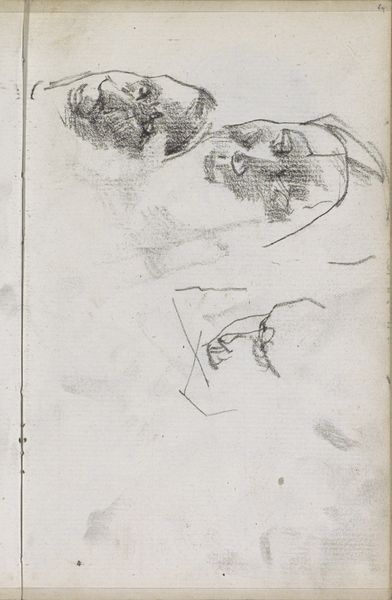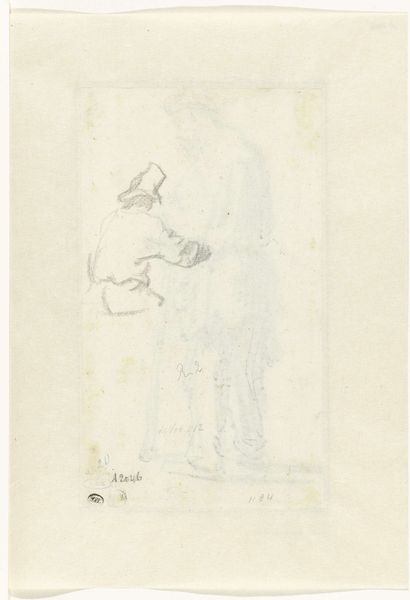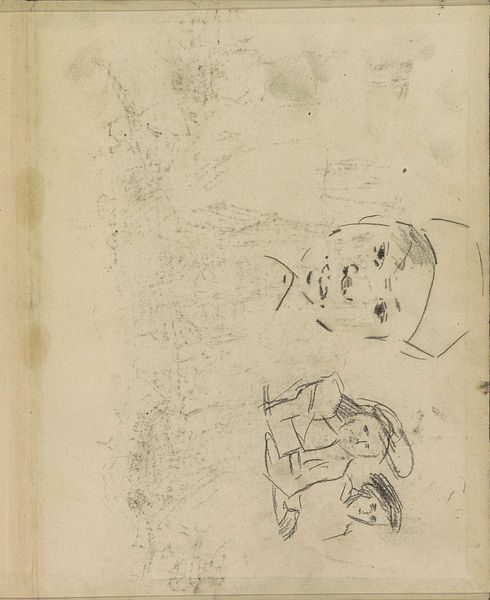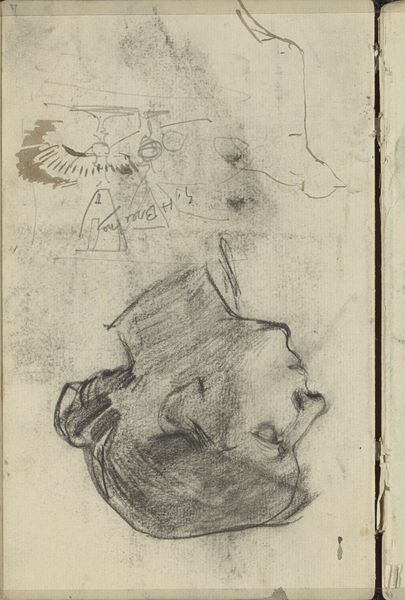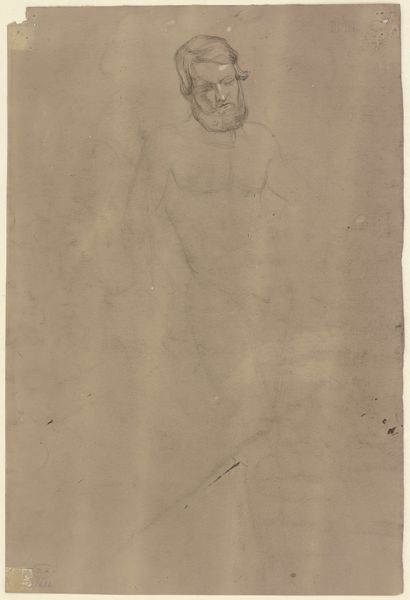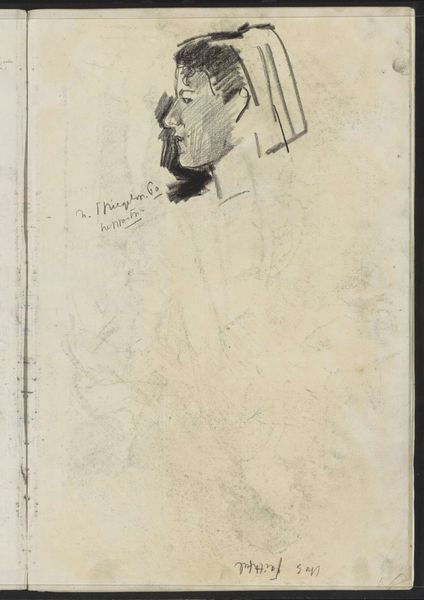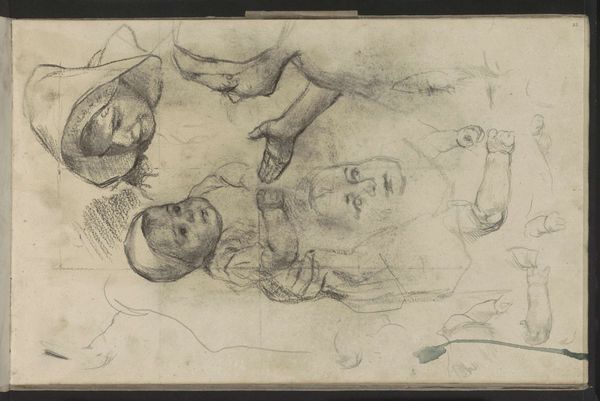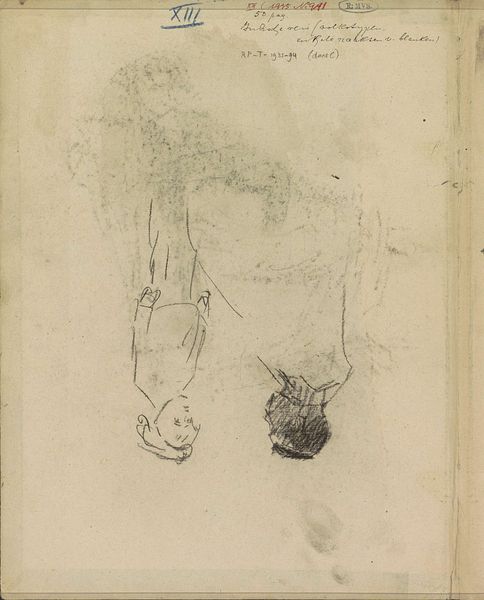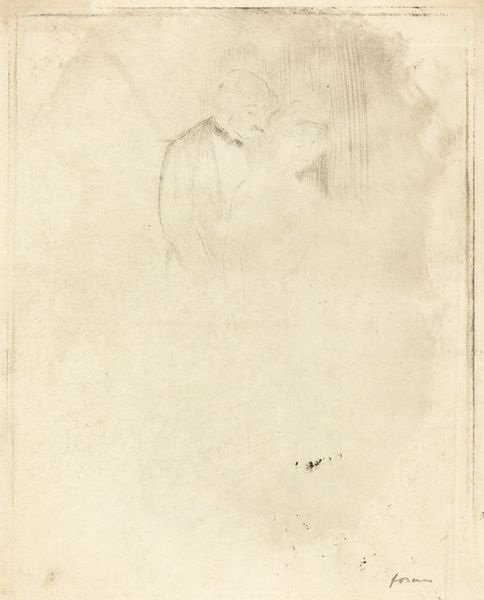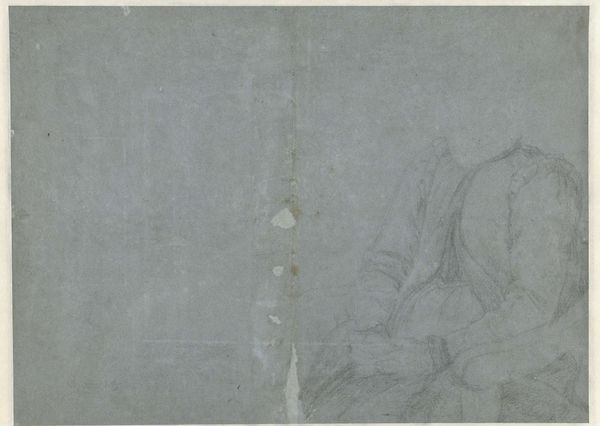
Dimensions: height 162 mm, width 131 mm
Copyright: Rijks Museum: Open Domain
Editor: This is "Sketch of a Woman with Glasses and a Bonnet" by Gerrit Willem Dijsselhof, likely created sometime between 1876 and 1924. It's a pencil drawing, and what strikes me is how raw and unfinished it feels. What are your thoughts on it? Curator: Well, consider the humble pencil, its manufacture, its cost, and its accessibility. The ease with which Dijsselhof could create this portrait, compared to say, an oil painting, shifts our perception. It allows us to focus on the process itself. The materiality of the paper, its texture under the pencil's lead... those are also part of the statement. Editor: So you're saying the choice of medium is crucial? Curator: Absolutely. Think about who this woman might be. Not a commissioned portrait for the wealthy, but a study, perhaps a friend or family member. The intimacy of the sketch, the quick, almost frantic lines, are possible precisely because of the readily available, and affordable, materials. It removes the artifice often associated with formal portraiture. It may not have even been made to be displayed. It could have been simply for observation or practice. Editor: That makes me think about how everyday materials can elevate a piece from a mere sketch to something much more thought-provoking. Does this challenge traditional ideas around “high” art? Curator: Precisely! What is traditionally ‘art’ and ‘craft’? Aren’t both results of labor, materiality, and consumption? Dijsselhof's piece makes us question the divisions and labor of making art by embracing simple tools and humble subject matter. This expands our appreciation to what may often be deemed as commonplace. Editor: I see, by focusing on the "how" and "why" of its creation, and the simple choices like using pencil on paper, we gain a much deeper appreciation for Dijsselhof’s work. Thanks for providing that context! Curator: Indeed. By investigating its materiality and manufacture, we can open up discussions and reconsider established values regarding artwork.
Comments
No comments
Be the first to comment and join the conversation on the ultimate creative platform.
